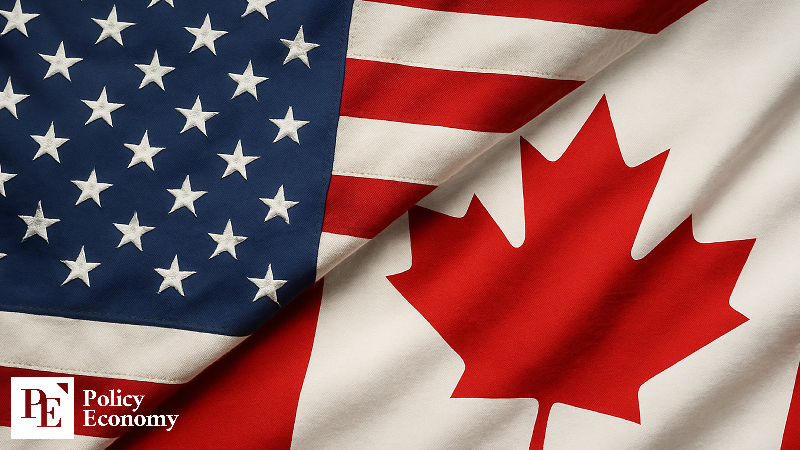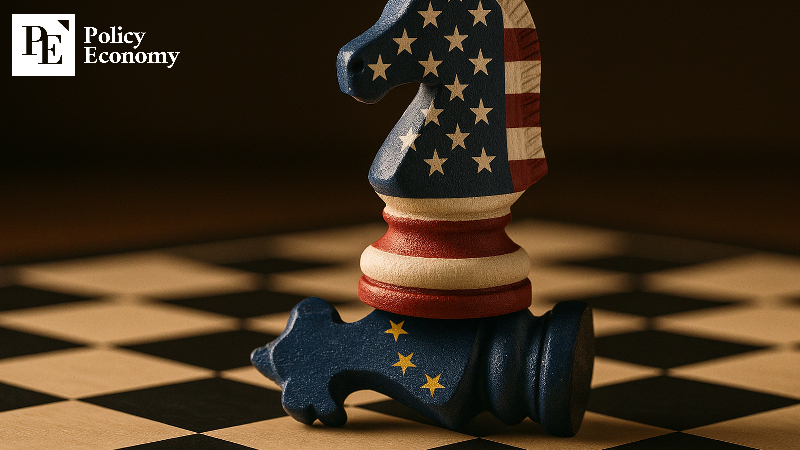Canada and EU Retreat in U.S. Trade Disputes to Avoid Deeper Losses
Input
Modified
Canada withdraws part of its retaliatory tariffs against the U.S. Move seen as effort to prevent companies from leaving Canada. EU also accepts unfavorable terms to avoid deeper losses.

Canada has partially withdrawn its retaliatory tariffs against the United States. Faced with growing market pressure from President Donald Trump’s hardline trade policies, Ottawa lowered its stance to prevent greater damage. Other countries engaged in tariff disputes with Washington, including the EU, have likewise conceded during negotiations in an effort to minimize risks.
Canada’s Concession
On the 22nd (local time), Canadian Prime Minister Mark Carney announced in Ottawa that Canada would withdraw tariffs on U.S. goods covered by the United States–Mexico–Canada Agreement (USMCA). He stated this move would restore free trade for most goods between the two countries, though tariffs on steel, aluminum, and automobiles would remain. The measure will take effect on September 1.
This follows Canada’s retaliatory action in March, when then–Prime Minister Justin Trudeau imposed 25% tariffs on $30 billion worth of U.S. goods after President Donald Trump announced new duties on Canadian products, including steel and aluminum. Although Carney, who took office in April after promising a tough stance against Washington, had campaigned on a harder line, he has since expressed skepticism toward maintaining retaliatory tariffs.
When Trump announced in June that steel and aluminum tariffs would rise from 25% to 50%, Ottawa responded only by maintaining its existing 25% tariffs. Likewise, after U.S. fentanyl tariffs on Canadian imports rose from 25% to 35% on the 1st of this month, Carney refrained from new countermeasures. Adding to this retreat, the Canadian government scrapped its digital tax opposed by U.S. tech companies in late June and abandoned further sanction plans in July—effectively giving up on retaliatory trade measures against the U.S.
Measures to Prevent Further Retaliation
Canada’s softened stance toward the United States stems from concerns that a prolonged trade dispute would inflict greater damage on its economy. When former Prime Minister Justin Trudeau imposed retaliatory tariffs in March, President Donald Trump posted on social media that “Governor Trudeau of Canada” should be told that if Ottawa imposed tariffs, the U.S. would immediately raise its own duties to the same level. By pointedly referring to Trudeau as “Governor” rather than “Prime Minister,” Trump signaled both a diplomatic slight and a standing threat of further tariffs.
That pressure remains. Should Canada once again challenge Washington, the U.S. government could swiftly retaliate with new punitive measures, putting Canadian industries under severe strain. One market analyst noted that maintaining or increasing tariffs would likely provoke higher U.S. tariffs, forcing companies unable to bear the added costs to leave Canada. He described Ottawa’s decision to step back as a strategic move to prevent deeper economic harm.
The impact is already visible. In the first half of this year, as the tariff war escalated, several automakers scaled back production in Canada. Stellantis temporarily halted operations at Chrysler and Dodge plants in Windsor, Ontario. General Motors suspended some Canadian production lines for months, citing weak demand for electric vans. Ford also shut down its assembly plant near Toronto. In response, Prime Minister Carney offered exemptions on tariffs for U.S. auto parts in exchange for commitments to keep vehicle production in Canada, attempting to stabilize the situation.

EU Accepts Losses to Strike a Deal
Like Canada, many countries ultimately chose pragmatism over confrontation with the United States. The European Union had long prepared a retaliatory tariff plan and in May published a 217-page list of targeted U.S. goods. On July 21, when President Donald Trump threatened to impose a 30% tariff, the EU responded by unanimously approving a €93 billion (about $109 billion) retaliation package on July 24. The plan was to impose duties on a wide range of American exports—including aircraft, automobiles, agricultural products, steel, aluminum, and whiskey—if no deal was reached by August 1, with tariffs taking effect on August 7.
Yet the plan quickly unraveled. Just three days after approving the measure, the U.S. and EU reached a trade agreement. Under the deal, the EU committed to importing $750 billion worth of American energy—including oil, gas, and nuclear fuel—over the next three years, while also pledging $600 billion in investments in the U.S., including defense procurement. Media outlets widely described the agreement as a sweeping victory for Trump.
The EU’s decision to absorb substantial financial costs reflected the bloc’s limited capacity to engage in a prolonged trade war with the world’s largest economy. Europe had already been grappling with slowing growth, and just before the deal the European Central Bank warned that global trade disputes were deepening uncertainty. For Brussels, the agreement was effectively a forced choice to reduce risk and restore stability.





















